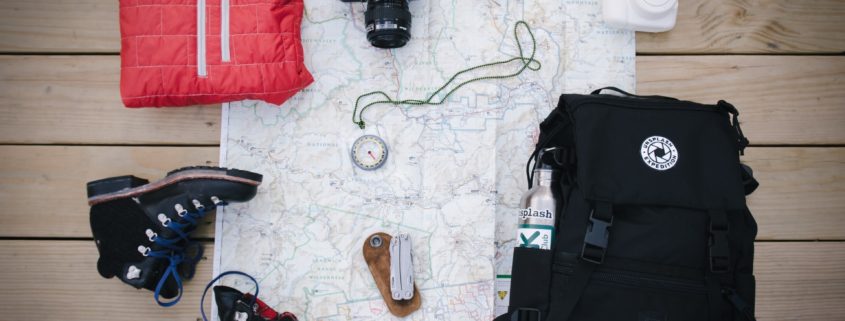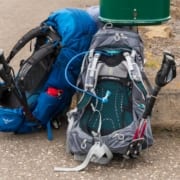How to Properly Care for Your Backpacking Gear
The only thing more impressive than brand-new backpacking equipment is gear that’s survived multiple seasons and has taken on a rugged, well-loved appearance. Dented coffee mugs, frayed backpack handles, and boots with mismatching laces tell a story of adventure and are direct evidence of a life spent in the backcountry.
Of course, if you properly care for your backpacking gear, it should last a long time. Backpacking equipment is built to last and should stand up to being dropped, stepped on, and thrown about.
However, that’s only true if you put some thought into the proper backpacking gear storage. Even the sturdiest tent can be undone by mildew and no amount of TLC will save a camping stove that’s been broken in storage. This means you need to learn how to properly care for your backpacking gear to ensure that it lasts a long time.
How to Maintain Your Backpack
Good backpacks are expensive and choosing the right backpack for you takes time and effort. This means that you have to give your backpack plenty of love between trips so that you don’t worry about its sturdiness while you’re on the trail.
Get yourself a rain-proof dry bag when you purchase your backpack. Rain-proof covers are cheap and easily stretch over your bag. By stopping moisture from getting in, you reduce the chances of mold forming later on.
After every trip, give your backpack a gentle scrub to remove any dirt and hang it to dry in a sunny, warm spot. Be sure to open all the pockets and remove any waste you find. When it comes to storage of your backpack, make sure it is in a well-ventilated, dry place to avoid any mold or damage by pests.
How to Take Care of Your Hiking Boots
Hiking boots may be the most important backpacking gear you own. Uncomfortable or misshapen boots can quickly lead to blisters and no amount of duct tape can save boots that are falling apart while you’re hiking.
You can prevent the worst boot mishaps by properly washing your shoes between every adventure. Remove any dirt that has accumulated on the soles and use a little disinfecting spray to kill off any bacteria that might be lurking in your insoles. Make sure you store your shoes in a dry space and give them a good look over before you lace them up.
It is worth bearing in mind that hiking boots can be repaired by a good cobbler. Shoe repair shops are ideal for things like resoling your boots, and many big-brands partner with particular repair shops that specialize in outdoor backpacking gear and shoes
Proper Care and Storage for Your Tent
Tents are infamous for mildew and mold. There’s simply nothing worse than getting your tent out before an adventure only to find a large patch of black goo has formed on the ground cover or fly. Fortunately, you can avoid the worst by storing your tent properly.
Proper backpacking tent storage and care start from the moment you start breaking down your camp. Shake out every layer of your tent to remove any dirt or waste that may have accumulated, and pack the tent away in its original bag.
When you get home, take the tent out and wash it down with soapy water. Next, hang the tent in a sunny spot — washing lines are ideal for this purpose. When you’re certain that the tent is bone dry, you can re-pack it into the bag.
Properly Store Your Sleeping Bag
Many of the rules that apply to your tent also apply to your sleeping bag. However, unless your bag is waterproof, it’s not a good idea to hose it down between every use.
Instead, invest in some disinfecting spray and hang the bag, fully unzipped, in direct sunlight. UV light from the sun can kill bacteria and stop an unwanted microbiome from forming in your sleeping bag.
As always, make sure you store the bag in its intended packaging and inspect it before you throw it in the trunk with the rest of your backpacking gear.
How to Store Your Camping Gear Between Trips
Camping gear like stoves, tin coffee cups, and plates make backpacking that much more convenient. There’s simply nothing better than firing up the cooker after a long hike and eating your fill of dehydrated hash browns and beans.
But how do you care for your backpacking gear between adventures? Just stuffing this all-important equipment into the nearest closet is not the answer. Instead, you should create a dedicated space to store all your campground gear.
Attics and basements make for ideal storage spots. But, if you’re working with limited space, you can always make extra space in small closets by decluttering and getting creative with clothes wracks, tack shelves, and compression bags.
When the time comes to store your camping gear put the hardiest equipment on the bottom and more fragile equipment on top — this is particularly important for gas canisters and stoves which can easily break.
Conclusion
A restful break in the woods can quickly turn into a wilderness nightmare if you don’t know how to properly care for your backpacking gear between trips. Before any trip, take a quick inventory of your equipment and test it to ensure that it is in full working order.
You should also create a dedicated storage space for all your outdoor backpacking gear. This space should be dry, secure, and well ventilated to stop critters and creepy-crawlies from ruining your next trip to the campground.
About the author










Valuable tips and recommendations for properly cleaning, drying, and storing different types of gear, including tents, sleeping bags, backpacks, and cookware. I appreciate the emphasis on regular maintenance and inspection to identify and address any issues before they worsen. The inclusion of eco-friendly cleaning options and suggestions for gear repairs adds a thoughtful touch to the article. Overall, this comprehensive resource equips backpackers with the knowledge and techniques needed to extend the lifespan of their gear, ultimately enhancing their outdoor adventures while being mindful of sustainability.